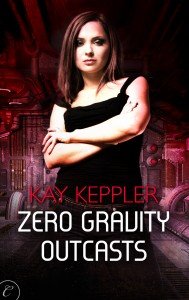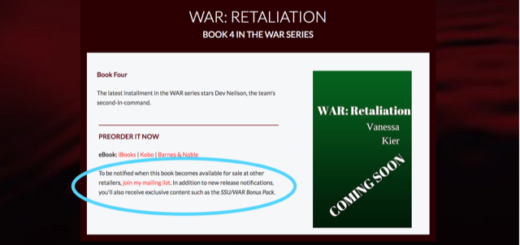10 Keys to Plot Structure by Kay Keppler
Let’s welcome back Kay Keppler for another month with Writer’s Fun Zone! In today’s article, Kay discusses 10 keys to plot structure. Enjoy!
***
10 Keys to Plot Structure
When writers talk about plot and character, they often reference movies or TV shows. That’s because film provides a visual — an extra dimension that helps viewers understand the story.
Screenwriters have a lot less space than novelists to tell their stories (120 pages!), so they have to get right to it. Michael Hauge is a film doctor who crystalizes plot structure into key 10 elements that will help any writer, screen or otherwise. These are:
-
The first and best rule above all rules
What’s happening now must be more interesting than what just happened. The whole point of structure — of your entire story — is to elicit emotion in your reader. If your story is increasingly compelling as you move forward, you succeeded.
-
The goal is everything
Your story’s structure depends on its events and turning points, which spring from your hero’s goal — a clear, visible objective that she’s desperate to achieve. Ask yourself, “What does my hero want to achieve by the end of the story? Will readers root for her to reach that finish line?” Then apply scene questions: “What does my hero want in this scene? How do her actions in this scene move her closer to that overall desire?” If your honest answer is “I don’t know” or “They don’t,” then your story, not just your structure, is comatose, if not dead.
-
More, bigger, faster, badder
Structure is built on desire, but the emotion you elicit grows out of conflict. The more obstacles your hero must overcome, and the more impossible it seems that he’ll succeed, the more captivated your reader will be. The conflict must build: each successive problem, opponent, hurdle, weakness, fear, and setback must be greater than the one that preceded it.
-
It’s an echo
In each successive scene, something must happen that hasn’t happened before: a new situation for the hero, a new secret to reveal, a new ally to join, a new enemy to confront. If you repeat actions and dialogue, you’re going nowhere fast — unless you’re creating an echo, or purposely repeating a situation or line of dialogue to illustrate the changes in your hero since the last event or speech (think of Groundhog Day).
-
Before and after
Think of three stages — not three acts that have events, but three life stages for your protagonist. In the beginning, show your hero in his everyday life. Maybe he’s stuck in some way — settling, or resigned, for example. Even in an action thriller, the opening shows a hero who has yet to face his greatest physical challenge. The middle is the journey — the hero’s pursuit of his goal and the conflicts and challenges he faces. The end is the hero transformed, living a different life, more mature and self-aware than he was at the beginning.
-
The opportunity
Early on, something must happen to your hero that hasn’t happened before. This opportunity creates her desire and moves her into action.
-
Focus and determination
Whatever goal drives your hero, she shouldn’t pursue that goal immediately. She should figure out what’s going on or where she fits in until her desire comes into focus.
-
Lines and arcs
Structure applies to both the outer journey of achievement and the inner journey of transformation. So as the hero faces increasingly difficult obstacles to reaching his goal, he must also gradually find greater courage to overcome whatever wounds and fears have kept him from finding fulfillment. At each scene, along with those questions in #2, ask yourself, “How does my hero change in this scene? How are his emotional fears revealed and tested?” And ultimately, “What does my protagonist have the courage to do at the end of the story that he didn’t have the courage to do at the beginning?” The answer to these questions is your hero’s character arc.
-
Secrets and lies
Telling your reader something that some of the characters in the story don’t know adds anticipation, a powerful structural tool for eliciting emotion. When we know who and where the killer is before the hero does, when we know the romantic comedy protagonist is pretending to be someone she’s not, when we know the planet is about to be destroyed before the inhabitants do — these keep us guessing what will happen when the truth comes out and that conflict must be confronted.
-
Turn fantasy into reality
Your job as a storyteller is not simply to take readers to incredible places, but to make them believe they are real. You can throw an everyday hero into an extraordinary situation, but she must then overcome whatever conflicts she faces in ways that an everyday person could. If she calls on some added talent to save the day, reveal that talent (or ally or weapon or knowledge or magic wand) early in the story, long before it’s needed. If she has superpowers, show how she got them, and make them limited in some way so she’s vulnerable.You can look at plot structure in many ways, and these 10 elements don’t begin to cover them all. But if you can incorporate all 10 into your novel, you’re well on your way to an effective structure.
***
ABOUT THE AUTHOR
 Kay Keppler (www.kaykeppler.com) is an author (Zero Gravity Outcasts, Betting on Hope, Gargoyle: Three Enchanting Romance Novellas) and editor of fiction and nonfiction (Angel’s Kiss, Outsource It!) who lives in northern California. Contact her here or at kaykeppler@yahoo.com to ask questions, suggest topics, or if you prefer, complain.
Kay Keppler (www.kaykeppler.com) is an author (Zero Gravity Outcasts, Betting on Hope, Gargoyle: Three Enchanting Romance Novellas) and editor of fiction and nonfiction (Angel’s Kiss, Outsource It!) who lives in northern California. Contact her here or at kaykeppler@yahoo.com to ask questions, suggest topics, or if you prefer, complain.







